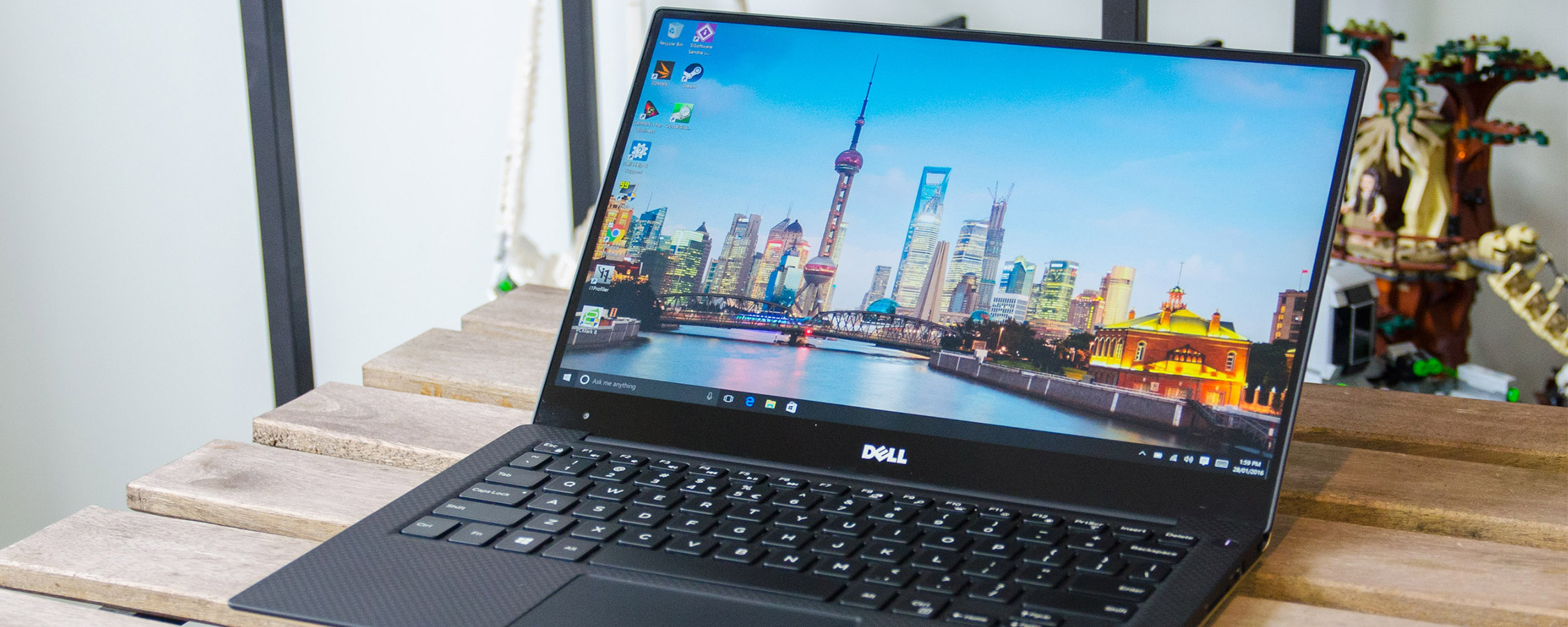GPU and Storage Performance
The Core i5-5200U in the old Dell XPS 13 and Core i7-6500U in the new model feature similar GPUs on paper: 24 execution units, and clock speeds of 950 and 1050 MHz respectively. The difference in clock speeds is just 11%, so any performance improvements over this figure can be considered a win for the new Skylake U-series parts.
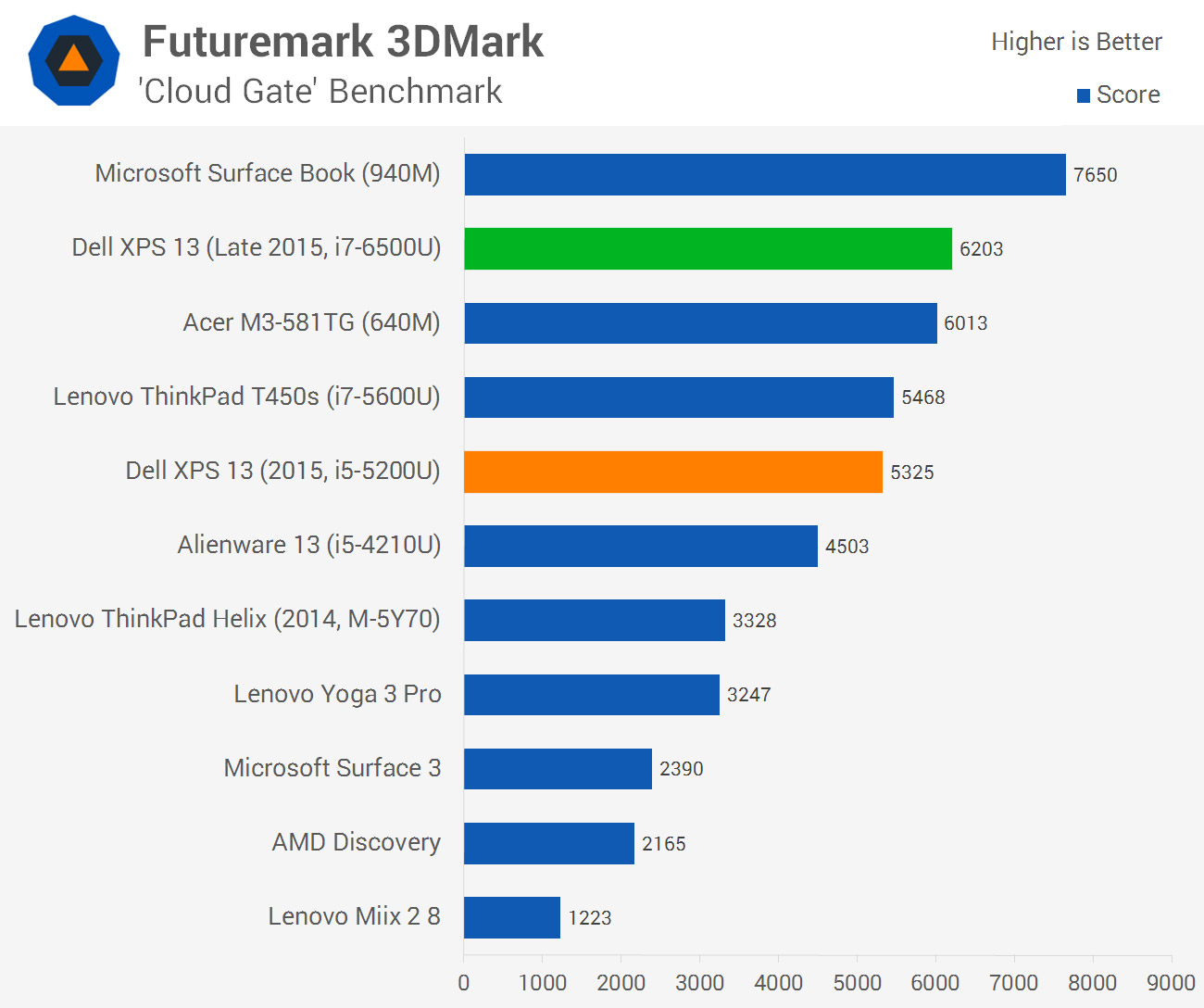
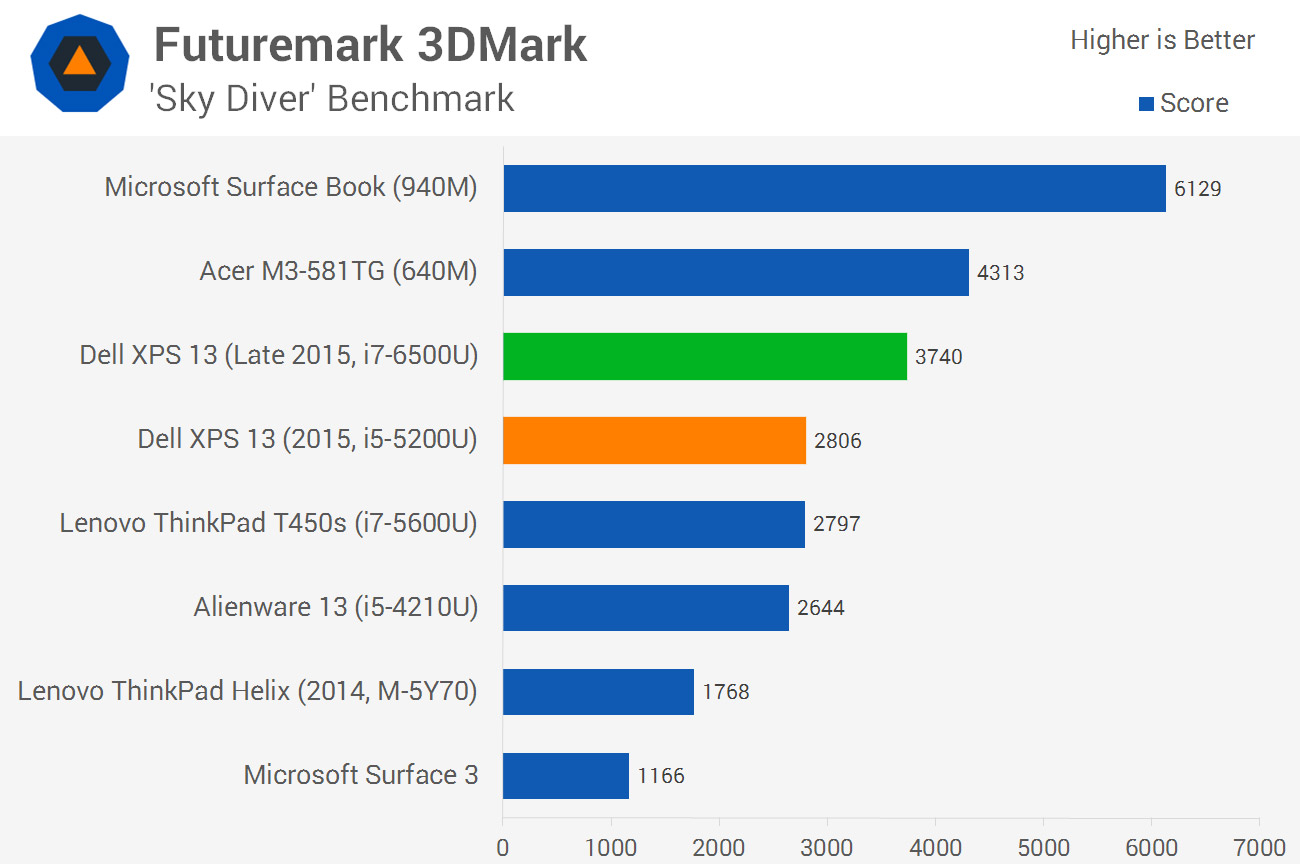
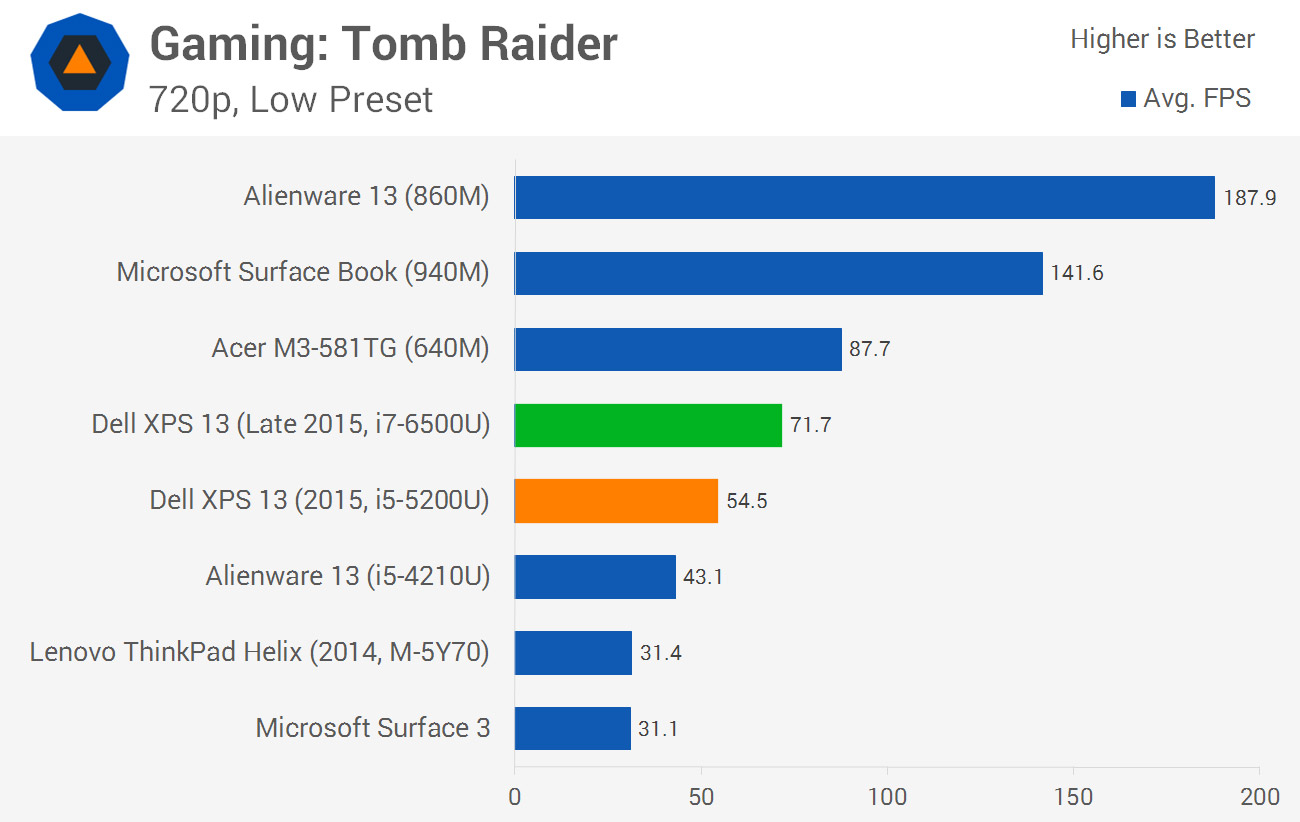
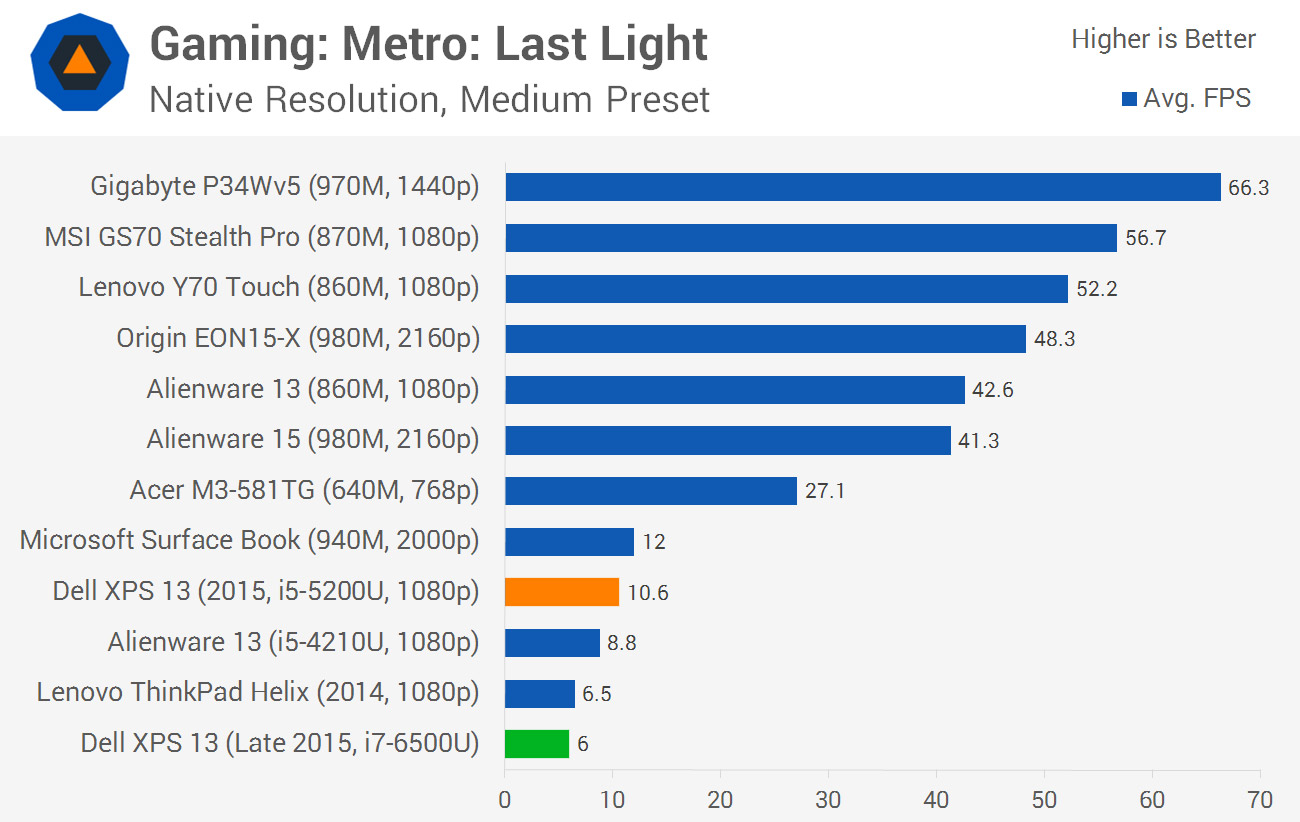
In 3DMark, the new XPS 13 outperformed the old model by 25% on average in the ultrabook appropriate tests, which is a decent margin considering the clock speed difference. In games I recorded similar margins: Tomb Raider performance improved by 31%, and Metro: Last Light saw gains of 29%, both when benchmarked at the same resolution.
GPU performance from this laptop is impressive, but the gains aren't enough to offset the increased resolution moving from 1920 x 1080 to 3200 x 1800. If you attempt to game at QHD+, expect to see your frame rates drop by around 40-50 percent.
Can you game on the XPS 13 at any reasonable level of performance? Well that depends on the sort of title you want to play. I gave Fallout 4 a spin on the lowest possible settings (at 900p because it refused to launch at 720p), and frame rates sat around 20 FPS, which is unplayable. Tomb Raider was playable on low settings at 900p, and older or less intensive games ran quite well, such as Brothers: A Tale of Two Sons (at 900p) and Grand Theft Auto: San Andreas (at 1080p with Very High settings).
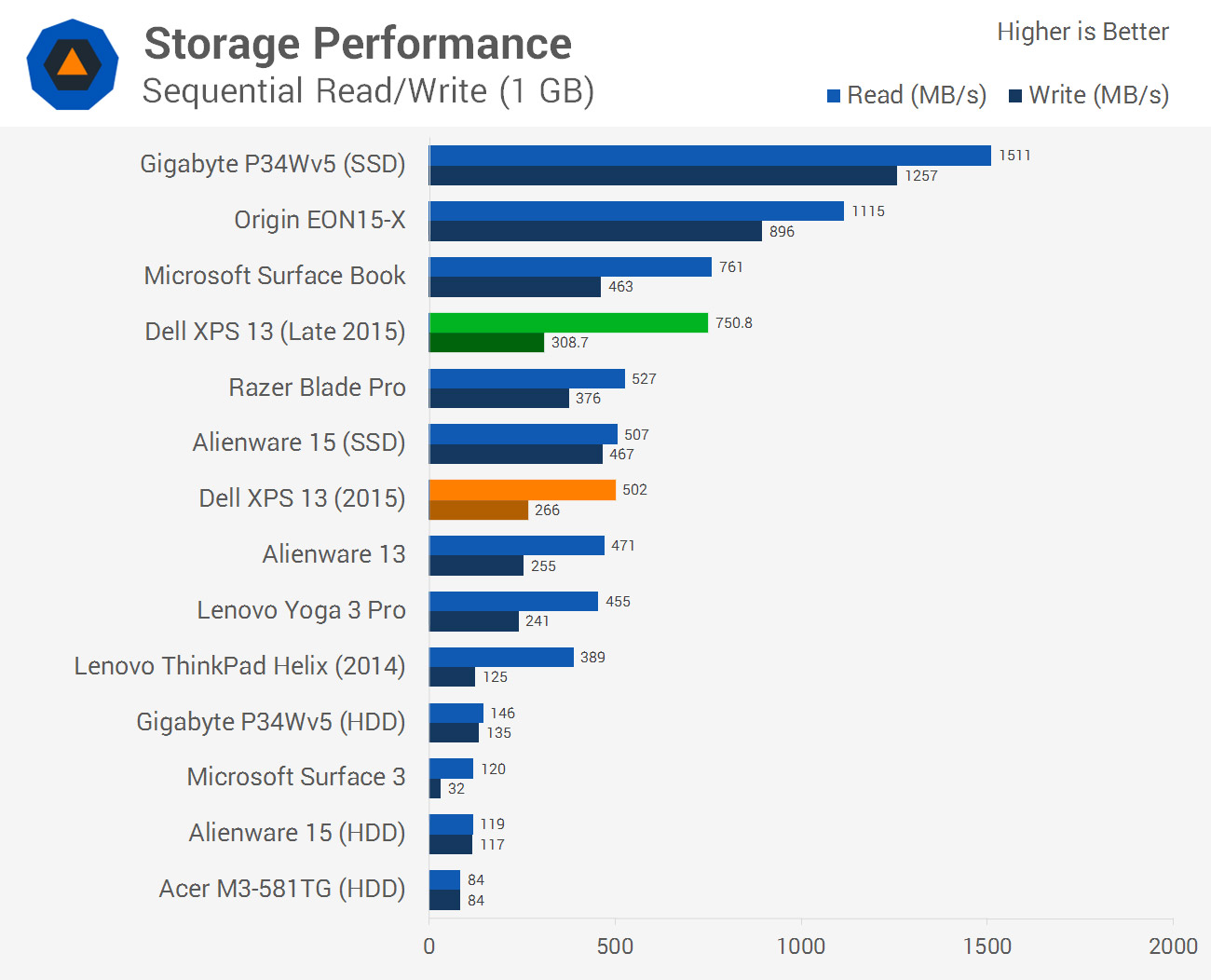
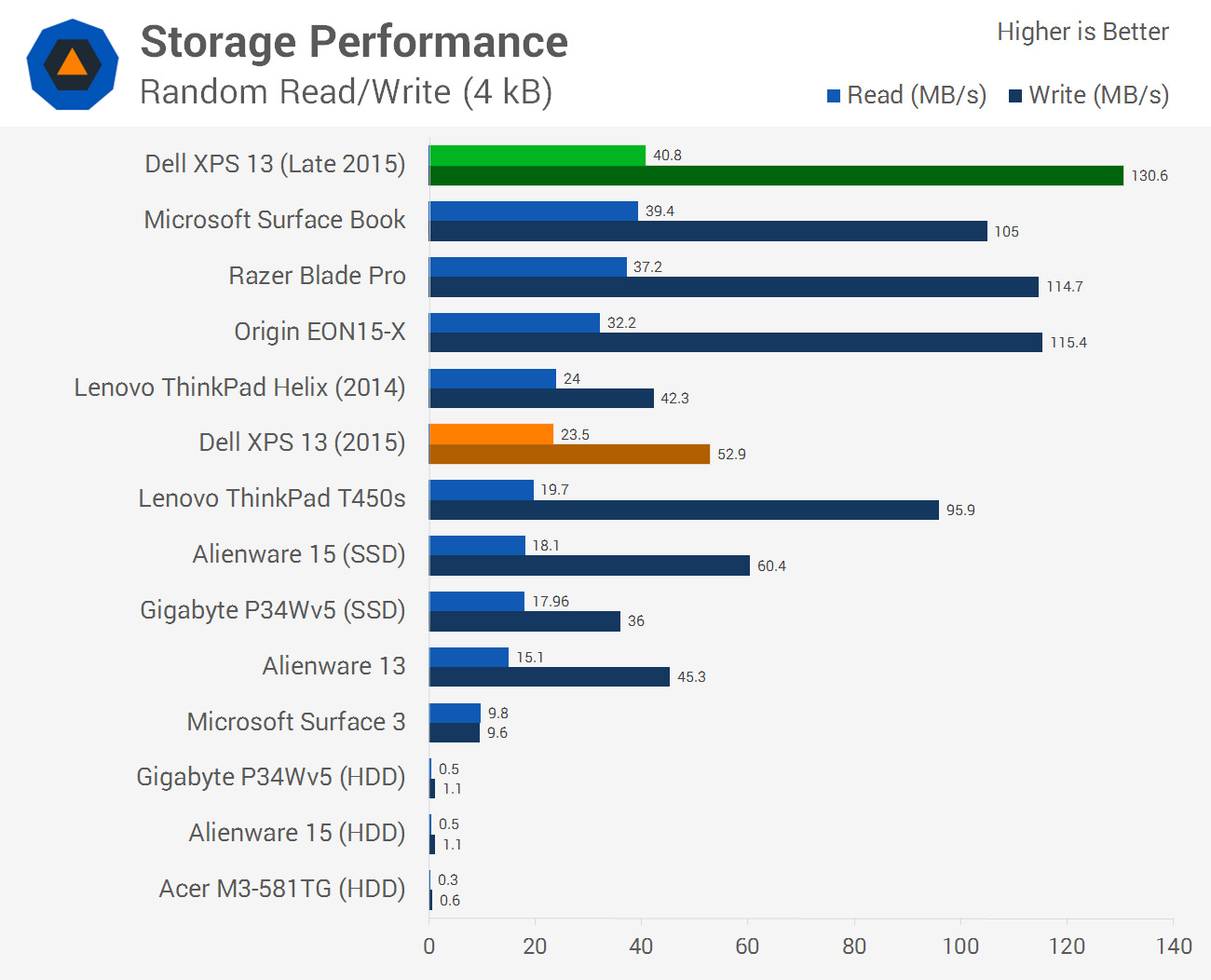
Storage performance from the 256 GB NVMe drive in my review unit was very good. Sequential read and write speeds were above 700 and 300 GB/s respectively, placing it in the territory of other high-performance laptops like the Surface Book. But where I was most impressed was with chart-topping random read/write performance; these types of transfers are the most common, and the XPS 13 really excels here with its Samsung drive.
